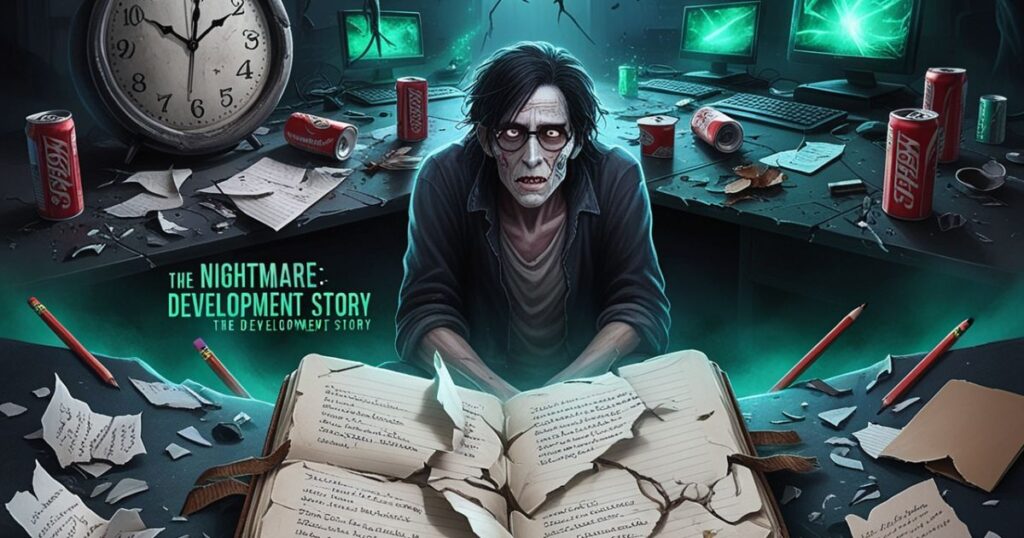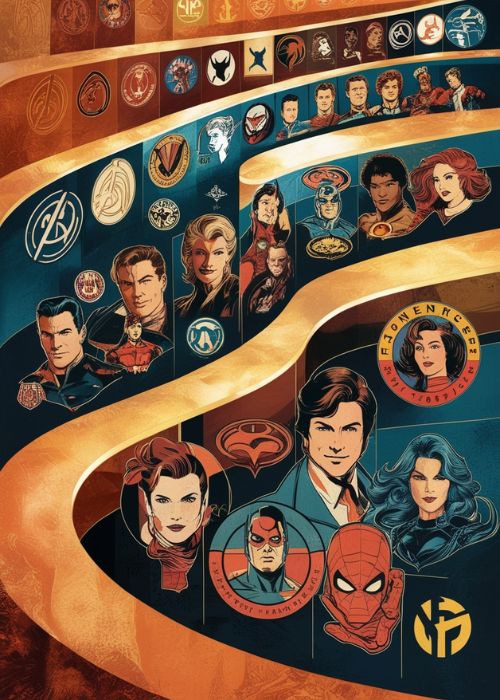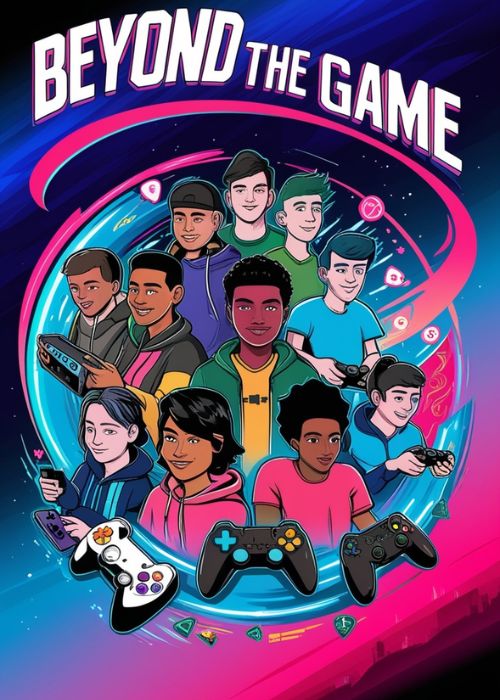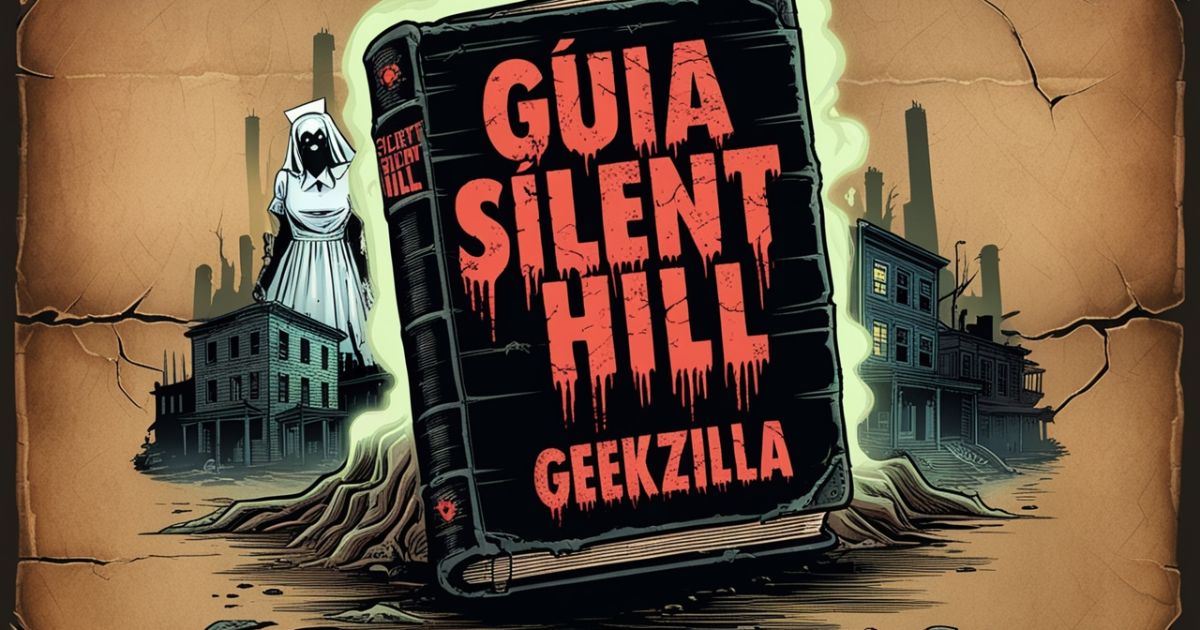Hey there, horror game fans! 🎮👻 Ready to dive into the fog-shrouded world of Silent Hill? This comprehensive Guia Silent Hill Geekzilla will take you on a spine-chilling journey through one of gaming’s most iconic psychological horror experiences.
Whether you’re a seasoned veteran or a trembling newcomer, get ready to explore every dark corner of this terrifying masterpiece that’s been haunting players since the late 1990s.
The Origins of Silent Hill: Birth of a Horror Legend
When Konami unleashed Silent Hill on the PlayStation in 1999, little did they know they were about to revolutionize the horror genre. Under the visionary direction of Keiichiro Toyama, this groundbreaking title transformed the landscape of psychological horror games forever.
“Silent Hill isn’t just a game – it’s a journey into the darkest corners of the human psyche.” – Gaming historian Mark Thompson
From Concept to Nightmare: The Development Story

The development team at Konami faced numerous challenges in bringing their vision to life:
- Technical limitations of the original PlayStation
- Creating a new type of horror that wasn’t reliant on jump scares
- Developing a story that would resonate on a psychological level
Despite these obstacles, they created something revolutionary that would define the survival horror experience for generations to come.
What Sets Silent Hill Apart?
- Atmospheric Excellence
- Fog-shrouded streets creating unparalleled tension
- A fictional town in the United States that feels disturbingly real
- Environmental storytelling that seeps into your bones
- Dynamic weather effects that heighten the sense of isolation
- Psychological Depth
- Themes of guilt, trauma, and redemption
- Reality-bending narrative that questions everything
- Characters with deep, often tragic backstories
- Symbolism that has sparked decades of fan theories
| Game Element | Silent Hill Innovation | Impact on Horror Genre |
| Atmosphere | Dynamic fog system | Created new standard for environmental horror |
| Sound Design | Industrial ambient music | Revolutionized horror game soundtracks |
| Storytelling | Psychological narratives | Elevated video game storytelling |
| Monster Design | Personalized nightmare creatures | Changed how horror games approach enemy design |
See Also: Shared Joy is Double Joy; Shared Sorrow is Halved – Tymoff
Gameplay Mechanics: Terror in Motion

The Silent Hill franchise masterfully blends three core elements to create a unique and terrifying gameplay experience:
1. Exploration
Venture through the foggy streets and abandoned buildings, where every corner might hide a new horror. The game’s exploration mechanics create a sense of dread that’s become synonymous with the survival horror experience.
The Two Realities
One of the most innovative aspects of Silent Hill’s exploration is the concept of dual realities:
- The foggy, abandoned town
- The nightmarish “Otherworld”
This dynamic creates a constant sense of unease, as players never know when the world might literally peel away to reveal something worse beneath.
2. Puzzle-Solving
Silent Hill gameplay mechanics aren’t just about running from monsters. The game challenges your mind with intricate puzzles that:
- Integrate seamlessly with the environment
- Require careful observation and logical thinking
- Often hide deeper narrative significance
- Range from simple riddles to complex multi-step challenges
Notable Puzzle Examples

- The piano puzzle in the school
- The Shakespeare anthology puzzle
- The infamous butterfly collection
3. Combat Mechanics
The intentionally clunky combat system in Silent Hill is a stroke of genius:
- Limited resources create tension
- Imperfect controls enhance vulnerability
- Strategic decisions between fight or flight
- Variety of weapons, each with pros and cons
Characters and Storyline: Faces in the Fog
Key Characters That Haunt Our Nightmares
- Harry Mason Our everyman hero, searching for his daughter Cheryl in a nightmare realm. His journey sets the tone for the entire series.
- Occupation: Writer
- Key relationships: Cheryl (adopted daughter)
- Iconic moments: The opening crash scene, school exploration
- James Sunderland (Silent Hill 2) A man trapped in his own guilt, James’s story in the second installment elevated the series to new heights of psychological horror.
- Defining characteristic: Unreliable narrator
- Key item: The letter from his dead wife
- Psychological significance: Represents denial and guilt
- Angela Orosco A tragic figure whose story tackles themes darker than any monster the town could conjure.
- Troubled past: Victim of abuse
- Symbolic encounters: The burning staircase scene
- Impact on narrative: Represents the town’s ability to trap troubled souls
- Heather Mason (Silent Hill 3) The protagonist of the third game, whose connection to the original adds layers to the expanding lore.
- Connection to original game: Actually Cheryl/Alessa reborn
- Character development: From normal teen to confronting her destiny
- Unique abilities: Can sense when reality is about to shift
The Role of Sound and Music: Terror’s Soundtrack

Sound Design That Haunts Your Dreams
Akira Yamaoka‘s masterful sound design transforms Silent Hill from scary to unforgettable:
- Industrial ambient sounds that set your teeth on edge
- The iconic radio static that warns of approaching danger
- Environmental audio that makes the town feel alive… and hostile
Breaking Down the Soundscape
- Ambient Noise
- Distant sirens
- Echoing footsteps
- Metallic scraping
- Wind through empty streets
- Monster Sounds
- Each creature has unique audio cues
- Psychological impact of sound design
- Use of silence to build tension
Musical Composition
Songs like Theme of Laura have become legendary in gaming history:
- Blend of industrial and melodic elements
- Emotional themes that underscore character moments
- A soundtrack that stands on its own as a musical masterpiece
Evolution of the Franchise

Timeline of Terror
- Silent Hill (1999) – The original nightmare
- Introduced the fog-shrouded town
- Established the core gameplay mechanics
- Created the foundation for the series’ lore
- Silent Hill 2 (2001) – Psychological horror perfected
- Deeper focus on personal psychological horror
- Introduced iconic characters like Pyramid Head
- Often considered the pinnacle of the series
- Silent Hill 3 (2003) – Direct sequel that expanded the lore
- Connected directly to the first game’s story
- Enhanced graphics and monster designs
- Darker, more aggressive tone
- Silent Hill: Shattered Memories – A unique reimagining
- Psychological profiling mechanic
- No combat, focus on running and hiding
- Multiple endings based on player choices
- Silent Hill HD Collection – Bringing the horror to new generations
- Remastered versions of Silent Hill 2 and 3
- Updated graphics and sound options
- Some controversy over changes from originals
See Also: Legacy Shave Net Worth – What Happens After Shark Tank
Cultural Impact: Beyond the Game

The 2006 film adaptation directed by Christophe Gans brought Silent Hill to a wider audience, though true fans know the games remain the definitive experience.
Legacy in Horror Gaming
- Influenced countless other psychological horror games
- Set new standards for atmospheric storytelling
- Created a benchmark for horror game sound design
Academic Analysis
Silent Hill has become a subject of serious academic study:
- Psychological Analysis
- Exploration of trauma representation in games
- Studies on fear and anxiety in interactive media
- Cultural Impact
- Influence on horror genre across all media
- Examination of symbolism and metaphor in games
Pro Tips for New Players 🎮
- Take Your Time
- Explore thoroughly
- Read every note
- Listen to every sound
- Don’t rush through areas
- Resource Management
- Conserve ammo
- Use melee when possible
- Know when to run
- Save healing items for boss fights
- Embrace the Horror
- Don’t rush
- Play in the dark
- Use headphones for full immersion
- Pay attention to visual and audio cues
Common Mistakes to Avoid
- Wasting ammunition on every enemy
- Ignoring the radio static warnings
- Skipping cutscenes (they often contain vital clues)
- Rushing through puzzle sections
Why Silent Hill Still Matters

After more than two decades, the Silent Hill franchise remains the gold standard for psychological horror games. Its influence extends far beyond the horror genre, inspiring:
- Academic discussions on narrative in games
- Psychological studies on fear in interactive media
- A dedicated community of fans and theorists
The Future of Fear
As we look to the future of horror gaming, Silent Hill’s influence can be seen in:
- Modern psychological horror games
- Narrative-driven experiences
- Sound design in all game genres
Conclusion: The Fog Never Lifts
As we conclude our Guia Silent Hill Geekzilla, remember that in Silent Hill, the real monsters might be the ones we carry within. Whether you’re a first-time visitor or a frequent tourist to this fog-shrouded town, the psychological horror and masterful game design ensure that Silent Hill will always have new nightmares to share.
Ready to face your fears? Share your Silent Hill experiences in the comments below!
This guide was created with love and terror by a die-hard Silent Hill fan. May your radio stay silent, and your flashlight never dim.

